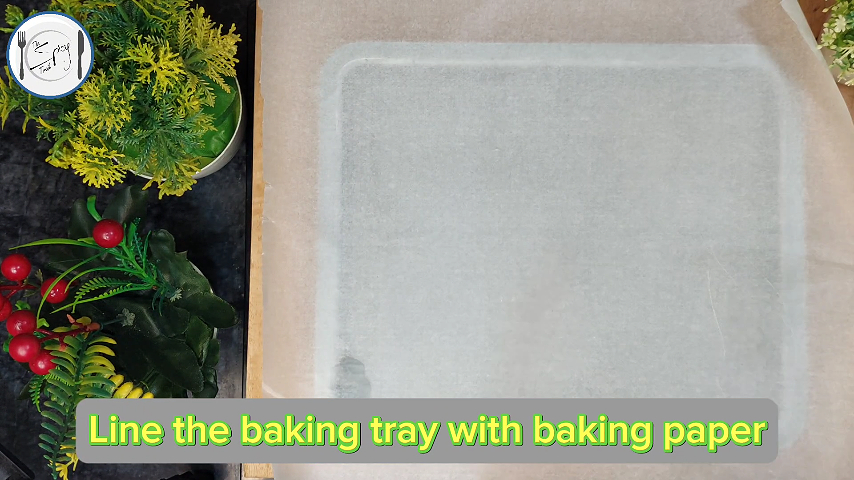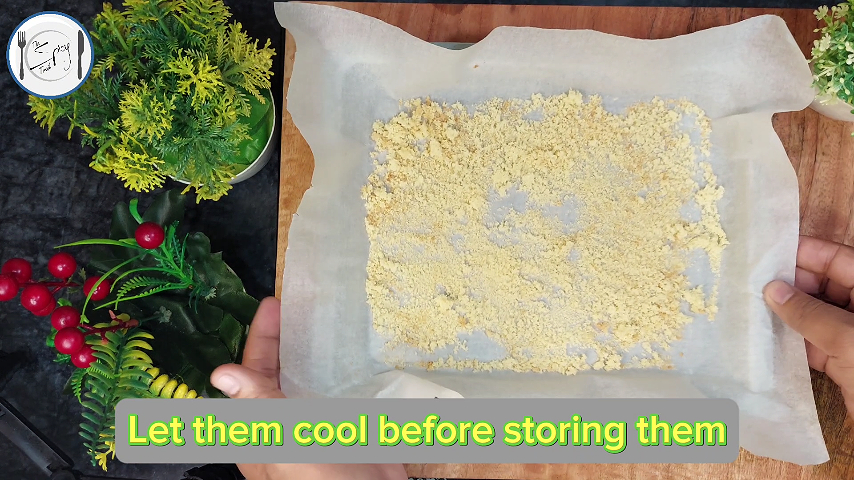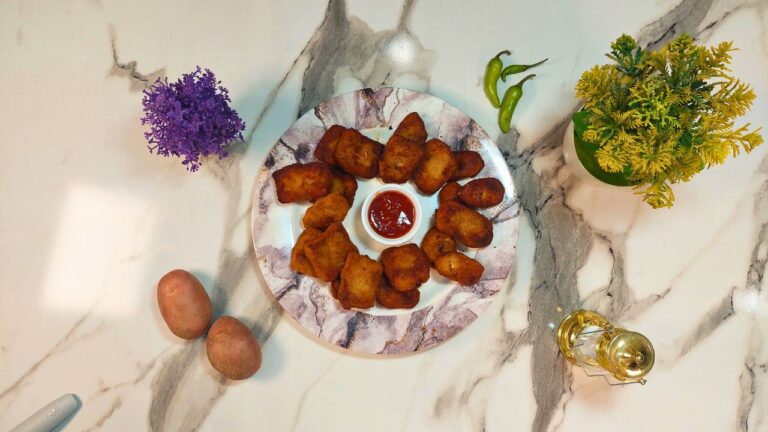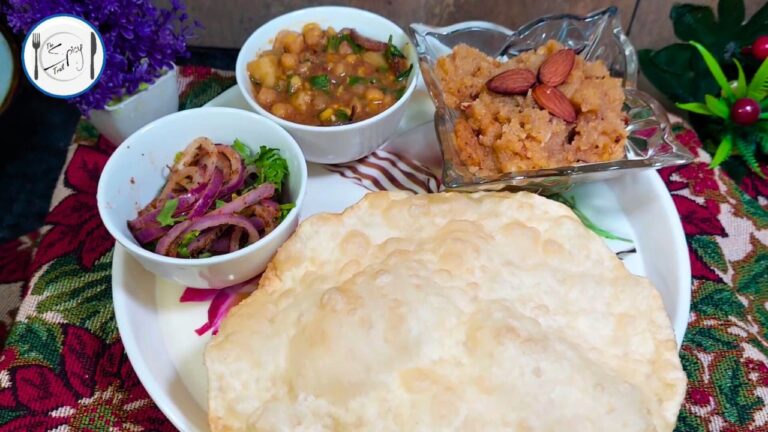Panko Bread Crumbs Recipe By The Spicy Trail | How to Make Panko Bread Crumbs
Are you ready to embark on a culinary adventure? In this recipe blog, we are excited to bring you a delightful creation that will add a crunch of flavor to your dishes – Panko Bread Crumbs. Whether you’re a seasoned chef or a beginner in the kitchen and looking for the answer to this popular question: How to Make Panko Bread Crumbs?, this recipe will guide you through the process of making your own Panko bread crumbs from scratch. But before we dive into the nitty-gritty, let’s explore the origins and characteristics of Panko.
What is Panko?
Panko is a type of breadcrumb that originates from Japan. Unlike traditional breadcrumbs, which are made from finely ground bread, Panko is made from crustless white bread that is processed into larger, coarser flakes. These flakes create a unique texture that is lighter and airier than regular breadcrumbs.

The word “Panko” itself is derived from the Japanese words “pan” (meaning bread) and “ko” (meaning flour or powder). Panko breadcrumbs are known for their exceptional crispiness and ability to create a lighter, crunchier coating on fried or baked foods. Due to their texture, Panko breadcrumbs stay crispier for longer periods, making them a popular choice for dishes that require a crispy exterior, such as breaded meats, seafood, and vegetables.
Panko breadcrumbs have gained popularity in international cuisines, and they are often used in various dishes to add texture and flavor. Their versatility makes them a favorite among chefs and home cooks alike.
Panko Vs Ordinary Bread Crumbs
Panko breadcrumbs and ordinary bread crumbs differ in several key ways, primarily related to their texture, ingredients, and culinary applications:
- Texture and Size:
- Panko: Panko breadcrumbs are larger, coarser, and more irregularly shaped than ordinary bread crumbs. They have a light and airy texture that results in a crispier and crunchier coating when used in cooking.
- Ordinary Bread Crumbs: Ordinary bread crumbs are finely ground and have a finer texture. They tend to create a denser and less crispy coating compared to Panko.
- Ingredients and Production:
- Panko: Panko breadcrumbs are made from crustless white bread that is processed into flakes. The bread is often baked or cooked before processing, which contributes to their pale color and distinctive texture.
- Ordinary Bread Crumbs: Ordinary bread crumbs are typically made from leftover or stale bread that is finely ground. The bread can vary in type, including white, whole wheat, or other varieties.
- Absorption of Oil and Moisture:
- Panko: Panko has a unique ability to absorb less oil during cooking, which helps maintain a crispy and light texture. This makes Panko an excellent choice for frying or baking when you want to achieve a crunchy exterior.
- Ordinary Bread Crumbs: Ordinary bread crumbs tend to absorb more oil and moisture, which can result in a heavier coating that is less crispy.
- Culinary Applications:
- Panko: Panko breadcrumbs are well-suited for dishes where a light and crispy texture is desired, such as fried foods, baked dishes, and coatings for meats, seafood, and vegetables.
- Ordinary Bread Crumbs: Ordinary bread crumbs are commonly used in recipes where a finer coating is acceptable, such as meatloaf, meatballs, stuffing, and casseroles.
In summary, while both Panko breadcrumbs and ordinary bread crumbs serve as coating agents in cooking, Panko’s unique texture and qualities lend themselves particularly well to achieving a crispy, light, and airy exterior in dishes, making it a preferred choice for many chefs and home cooks.
Homemade Panko Recipe
Now, let’s delve into the process of creating your own Panko bread crumbs. This recipe involves a few simple steps that will lead you to a batch of airy crumbs that can elevate your dishes to a new level. From selecting the right bread to achieving the perfect flakiness, we’ll guide you through each stage of the process.
As we embark on this culinary journey, gather your ingredients and prepare to witness the transformation of basic bread into a delightful culinary addition. The tantalizing aroma and satisfying crunch of homemade Panko bread crumbs await you in the next phase of our adventure. So, without further ado, let’s set our sights on the path to crafting your very own Panko bread crumbs – a versatile ingredient that will soon become a staple in your kitchen creations.
Ingredients
Instructions
- Begin by selecting fresh bread slices and gently remove the crusts from each slice.

- Grate the crustless bread slices using a box grater, or if you prefer, you can use a food chopper or blender to achieve the desired coarseness of the crumbs. If using a blender, pulse the bread for a maximum of one minute, adjusting the time to achieve your preferred crumb size.

- Prepare a baking tray by lining it with baking paper to prevent sticking. Spread a thin and even layer of the freshly grated breadcrumbs onto the lined baking tray. Make sure not to overcrowd the tray to ensure even baking.

- Preheat your oven to 150°C (approximately 300°F). Carefully place the baking tray with the breadcrumbs into the preheated oven. Bake for 5 to 7 minutes, keeping a close eye on them to prevent browning. The goal is to achieve pale color without allowing the crumbs to turn brown.

- Once the breadcrumbs have been baked to the desired color and texture, carefully remove the baking tray from the oven. Allow the Panko breadcrumbs to cool completely before transferring them to a storage container. The cooling process ensures that the breadcrumbs remain crisp and ready to use.

Congratulations, you’ve successfully created your own batch of crispy and flavorful Panko bread crumbs! These golden flakes are now ready to work their magic in your culinary creations. Whether you’re coating chicken tenders for a satisfying crunch, adding a crispy topping to baked macaroni and cheese, or preparing a batch of perfectly fried shrimp, your homemade Panko breadcrumbs are here to enhance the texture and taste of your dishes. Simply dip or coat your ingredients in these breadcrumbs before cooking, and you’ll be delighted by the irresistibly crunchy results.
Storage and Shelf Life
Your homemade Panko breadcrumbs can be stored for an extended period, allowing you to enjoy their goodness over time. To maintain their crispiness and flavor, store the breadcrumbs in an airtight container placed in a cool, dry place. When properly stored, your Panko breadcrumbs can stay fresh for up to several months. Remember, the key is to keep moisture away to preserve their delightful texture.
Useful Tips
Here are some useful tips a perfect Panko Bread Crumbs Recipe:
- Flavor Infusion: For an extra layer of flavor, consider mixing your Panko breadcrumbs with herbs, spices, grated Parmesan, or even a touch of citrus zest before using them as a coating.
- Uniform Coating: To ensure an even and thorough coating, gently press the Panko breadcrumbs onto your ingredients, adhering them well for optimal crunchiness.
- Freezing: If you anticipate not using your homemade Panko breadcrumbs within a few months, consider freezing them in smaller portions to maintain their freshness.
- Recipe Adaptation: Feel free to experiment by substituting Panko breadcrumbs for regular breadcrumbs in your favorite recipes, transforming familiar dishes into delightful culinary surprises.
As you savor the results of your homemade Panko breadcrumbs, remember that this is just the beginning of your gastronomic journey. Our recipe collection offers a wide array of culinary delights, ranging from delectable appetizers to mouthwatering main courses and irresistible desserts. If you’re looking for a delicious way to showcase your freshly made Panko breadcrumbs, why not try them in our tantalizing Fried Chicken Sandwich recipe? This crowd-pleaser combines the crunch of your homemade Panko with succulent fried chicken, creating a symphony of flavors that’s sure to satisfy. Whether you’re seeking more international flavors or traditional favorites with a twist, our diverse selection of recipes is here to inspire your next kitchen escapade. Happy cooking, and may your culinary exploration continue to yield delectable results!







One Comment